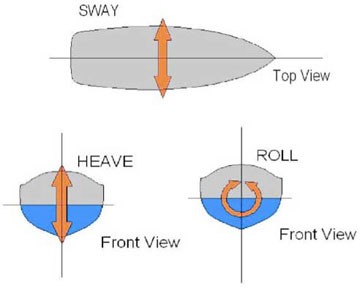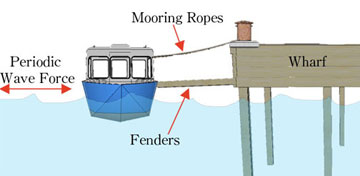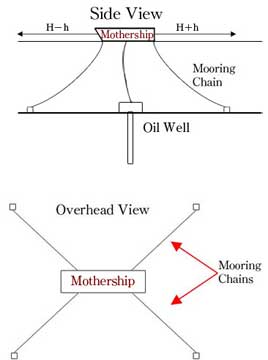Mooring large ships both in open water and at port is an issue of safety. Waves, wind, currents and other factors act on a ship in the water causing it to move in a variety of ways; in particular, ships heave (move up and down), roll (tilt side to side), sway (move back, forth or sideways), surge (lift and move forward), pitch (plunge forward) and yaw (turn). Below are diagrams showing some of these movements:

At dock, these movements can cause harm to the ship, the dock, and the personnel who are working in the area. The “large ships” that are loaded and unloaded at dock typically weigh 250,000 tons and are 300 m long, 25 - 35m high and 50 m wide. The set-up of a docked ship is shown in the diagram below:

At sea, ships are typically moored in order to pump oil from the bottom of the sea. In this case, the ship needs to be moored securely so that the lines running from the drills to the ship won’t break because breaks in the line could cause oil to spill into the sea. This mooring set-up is shown in the diagrams below:

These moored mother ships weigh up to 106 tons, carry 1.3 x106 barrels of crude oil, are approximately 100 m high, and are anchored in water up to 1400 m deep.
Goals:
- To safely constrain a ship at dock, minimizing it’s movement to ensure that it can safely be loaded and unloaded. This can be accomplished by determining which forces are acting on the ship, and how those forces are affecting the movement of the ship in the water.
- To constrain a mother ship at sea so that oil can be pumped into it without leaking oil into the surrounding waters. This would be accomplished by finding the optimal size (length & diameter) for the mooring chains.
- The ship also needs to be kept as close to a central position as possible. To accomplish this, the forces acting on the ship need to be investigated to understand just how much the ship will be displaced and how long it will take for the ship to return to its central position after becoming displaced.
